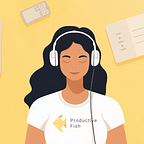How to Meditate for Beginners
Meditation is a practice of calming your mind and body. It helps you take a break from worrying and learn to pay attention to the present moment without judging it.
Meditation shouldn’t be complicated or tied to any religion. It’s a tool anyone can use to improve their mental well-being. The meditation practice encourages us to focus on breath and helps us train our minds to concentrate better in daily life. Find out why you should give it a try and learn how to meditate for beginners.
Read the full article “How to Meditate for Beginners: Quick Guide with Tips”
What Happens to You When You Meditate
There are many reasons to practice meditation. So here are four main benefits of meditation.
Enhances Sleep Quality
Meditation helps with sleep by tackling the main reasons we often can’t sleep, like stress or an overactive mind. It helps our body and mind calm down, making it easier to fall asleep and improving the quality of our sleep. Making meditation a part of your bedtime routine also tells your brain it’s time to wind down, which helps you develop a consistent sleep schedule.
Reduces Stress and Anxiety
Meditation has enormous benefits in our anxiety and stress levels, too. It’s all about calming your mind and reducing chronic stress in the body.
Researchers at Johns Hopkins University sifted through nearly 19,000 meditation studies and found 47 that were the effectiveness of meditation. Their analysis concluded that mindful meditation can indeed help ease psychological stresses, including anxiety, depression, and pain. It also soothes our stress hormones by decreasing the amount of cortisol in our brain — too much cortisol can make us feel more stressed.
Improves Focus
Meditation helps to improve concentration, which makes sense. By practicing focusing on your breath or a specific thought while meditating, you’re actually training your brain to concentrate better on everyday tasks as well.
When you meditate regularly, the parts of your brain that control memory and learning get a boost, and the parts that wander off into dreams or get stressed don’t become as active. This means you spend less time feeling scattered and more time feeling sharp and focused.
Read the full article “How to Meditate for Beginners: Quick Guide with Tips”
How to Meditate
Meditation is a great tool that is available to everyone. That’s why we want to share the basic steps of mindfulness meditation for beginners.
Find a Quiet Place
Find a place where you can relax and not be interrupted during your meditation. It is especially important to avoid any external distractions. It is better to turn off noisy appliances. At the same time, the meditation space does not have to be completely silent, so you will not need earplugs.
If you listen to music, choose calm, repetitive melodies, white noise, or quiet sounds of nature, such as the sound of running water. The main thing is that they do not disturb your concentration.
Take a Comfortable Position
Sit comfortably. Don’t worry too much about how you sit, what you are wearing, what you are sitting on, etc. You don’t have to go out of your way to sit cross-legged unless you want to. You can sit on a chair, on a pillow on the floor, or a couch. The essential thing is to keep your back straight, but not strained. And promise to devote the allotted time to meditation, regardless of whether it is difficult or easy for you.
Set a Timer
By setting the timer, you won’t need to check your watch and thus distract yourself. Just delegate it to a timer or meditation app.
Start with a few minutes. This is very important. Most people think they need to meditate for 15–30 minutes. But we are trying to form a long-term habit and relax. Thus, start with a few 2–5 minutes. It will be much easier for you to start, and forming a habit from a small beginning is a method with a much higher chance of success. Over time, gradually increase your practice time.
Focus on Breath
Feel your breath. Watch your breath go through your nostrils, then down your throat, then into your lungs and belly. Try to feel the inhale and then the exhale. You can keep your eyes open, but look at the ground and with a soft focus. Or close your eyes to help you focus.
Count your breath: start with 1 and work up to 10. If you lose track, start again.
Key Point
Whenever you get lost in thought, gently return to your breath. As Sharon Salzberg, a teacher of Buddhist meditation practices, says: “Starting over and over again is the practice, not a problem to be overcome so that one day we can arrive at ‘real’ meditation.”
These are the five steps to help you practice basic mindfulness meditation. That said, there are different types that you can try as well.
